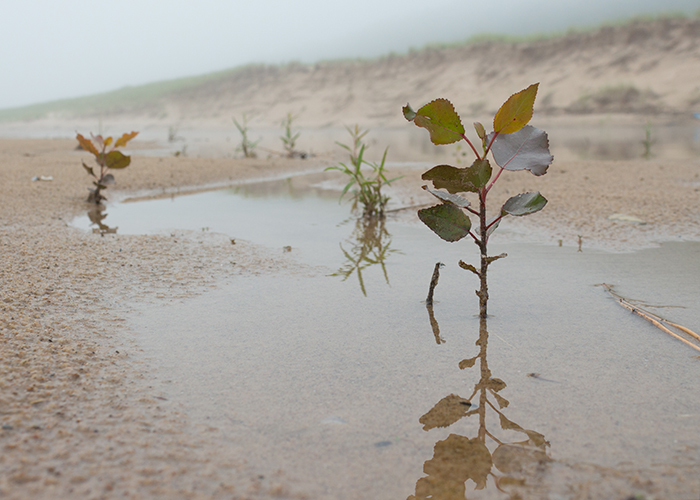 Previous Day |
Joliet, IL → Indiana Dunes NP → Joliet, IL 125.0 mi (201.2 km) |
 More 2019 Adventures |
How d’ya dune, everyone?!
Today is my birthday! What better way to spend the big 26th than to meet up with my hiking buddy, Brett, who recently moved to Chicago, and check out the newest National Park in the NPS system: Indiana Dunes?! It’s a lot flatter out this way, and much safer than my last birthday adventure, but there should be some lovely lake views and neat things to explore on the sandy seashore! Let’s go!
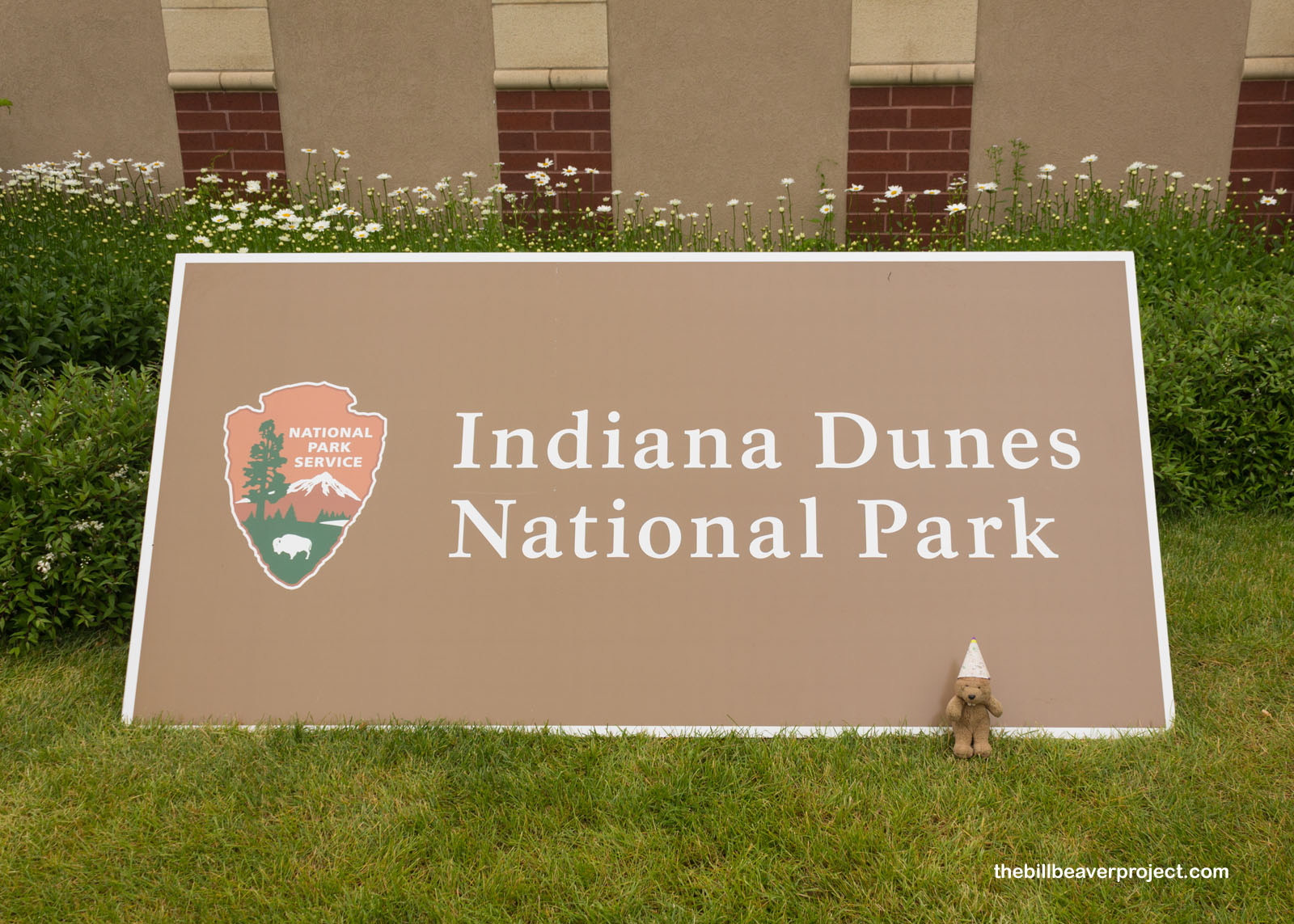 |
The visitor center recommended that we start out at Cowles Bog, a National Natural Landmark named for Dr. Henry Cowles, whose studies on plant succession led to the dunes being set aside for preservation. What’s plant succession? In the case of the Indiana Dunes, it’s how new plants take hold in a constantly changing landscape!
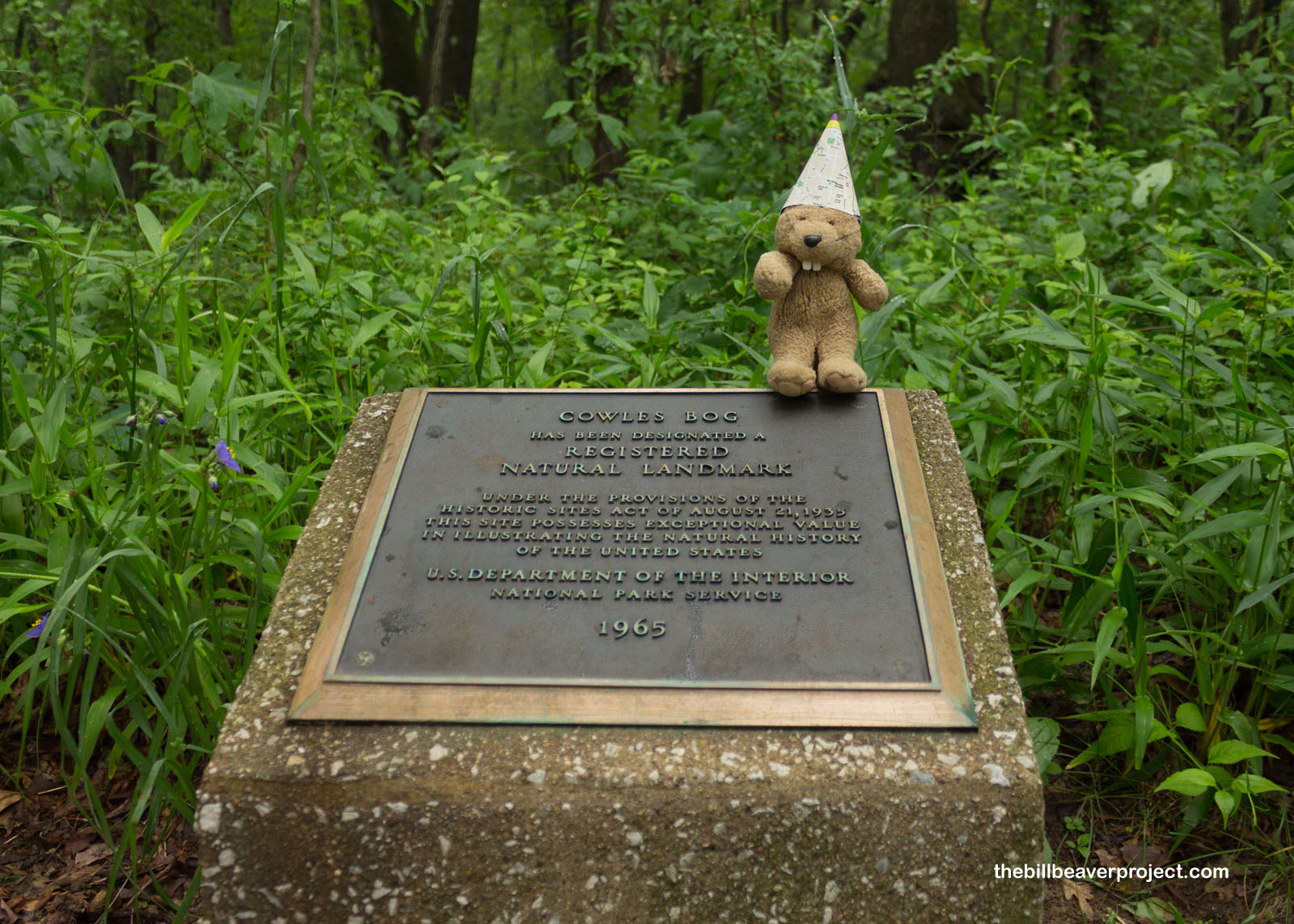 |
The Cowles Bog Trail was certainly flatter than the last trails I hiked with Brett, with a whole lot more mosquitoes buzzing about, but coming from dry California, I lost myself in the beauty of the bright green, misty woods on all sides of the trail!
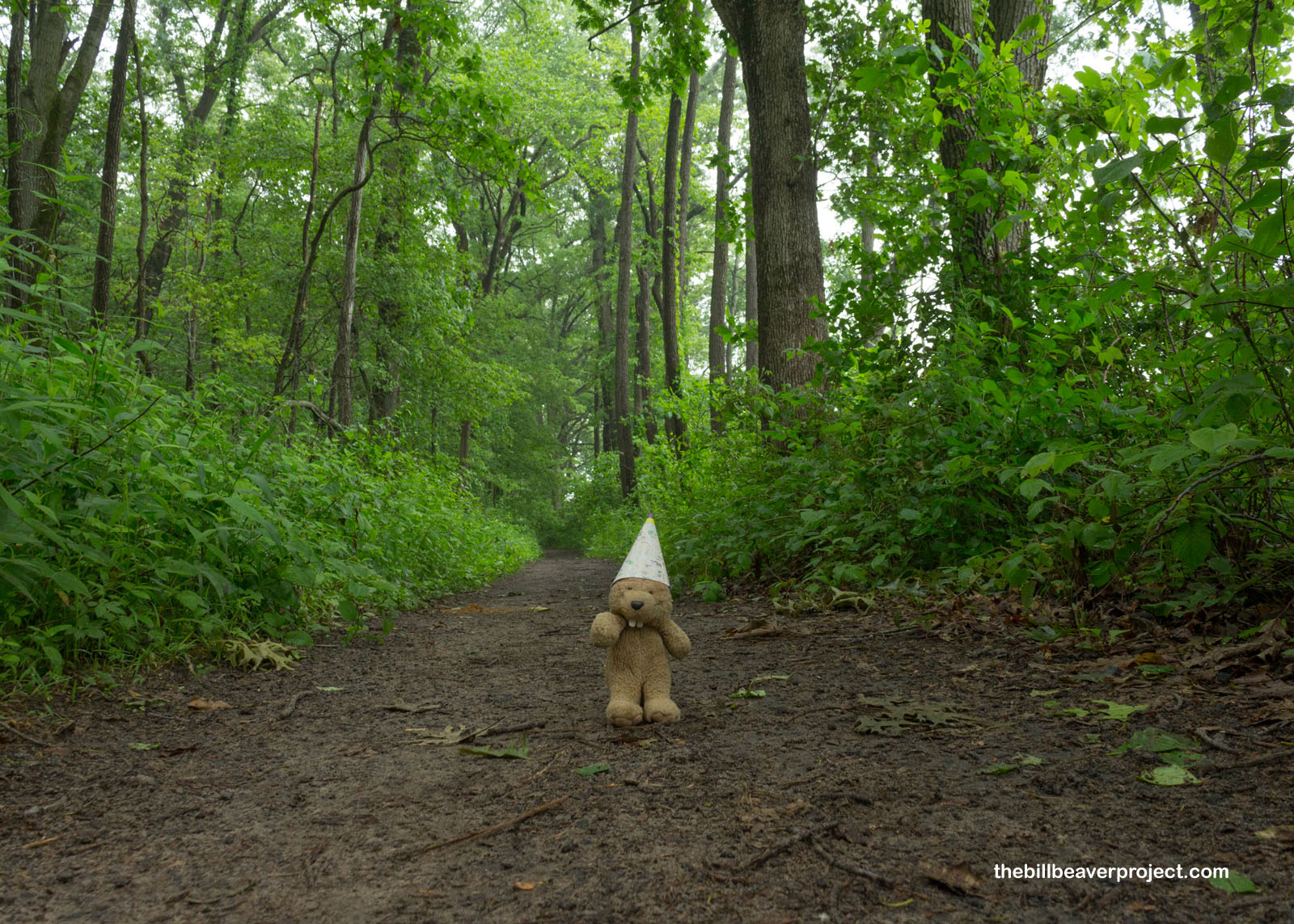 |
While we did find enough open water to justify the mosquitoes, there wasn’t much of a bog to see along the trail. Not only has this area dried into a wet woodland over the years, but it’s also not really a bog at all. It’s a fen! What’s the difference, you ask? Bogs are acidic, and fens are either pH neutral or basic! That’s fen-omenal!
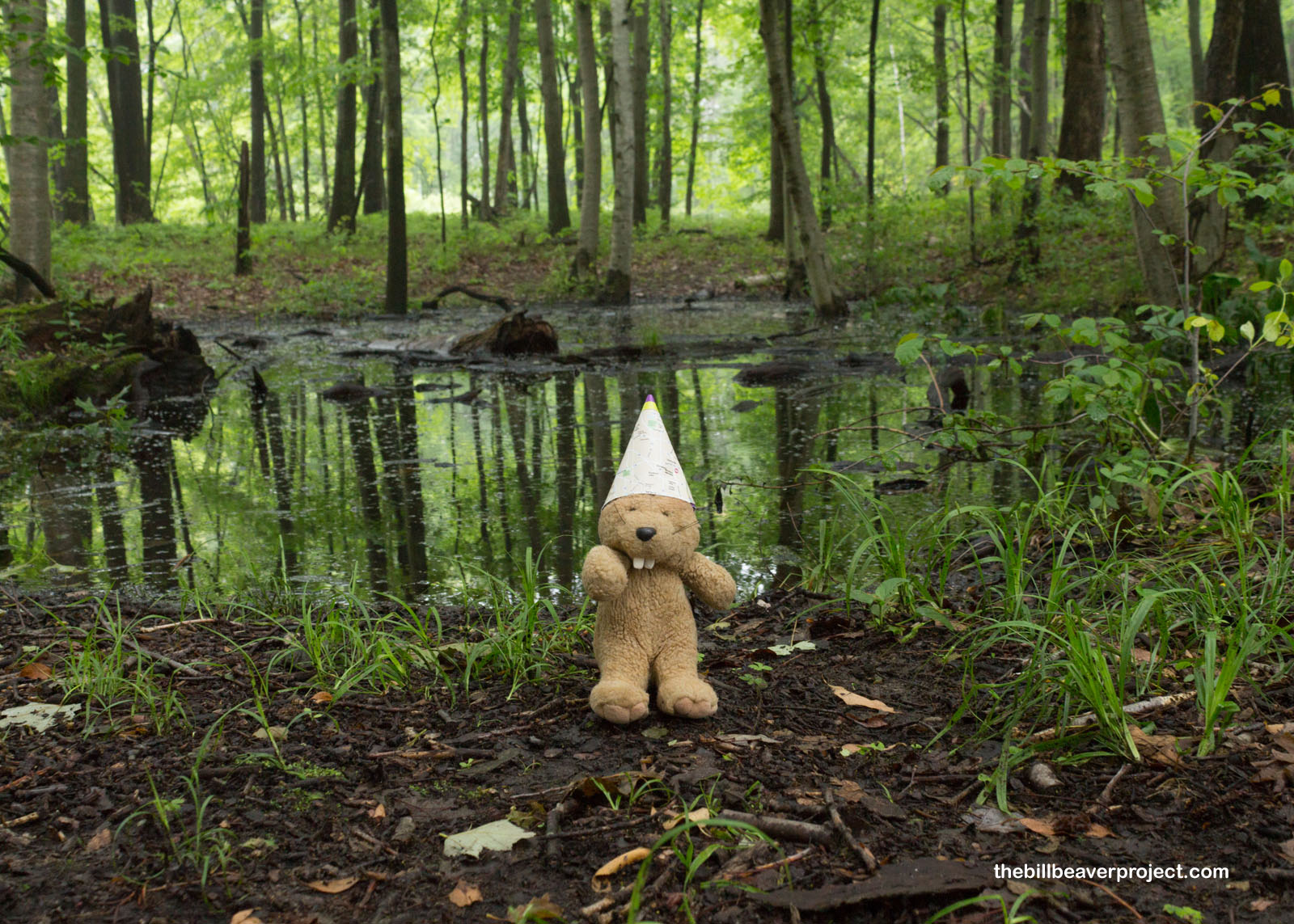 |
But we were here to see dunes, and dunes were just ahead on the trail! Compared to the 17.3 miles of the Mount San Gorgonio trail we hiked almost exactly a year ago, this 1.8 miles of rolling green trail was pretty darn relaxing!
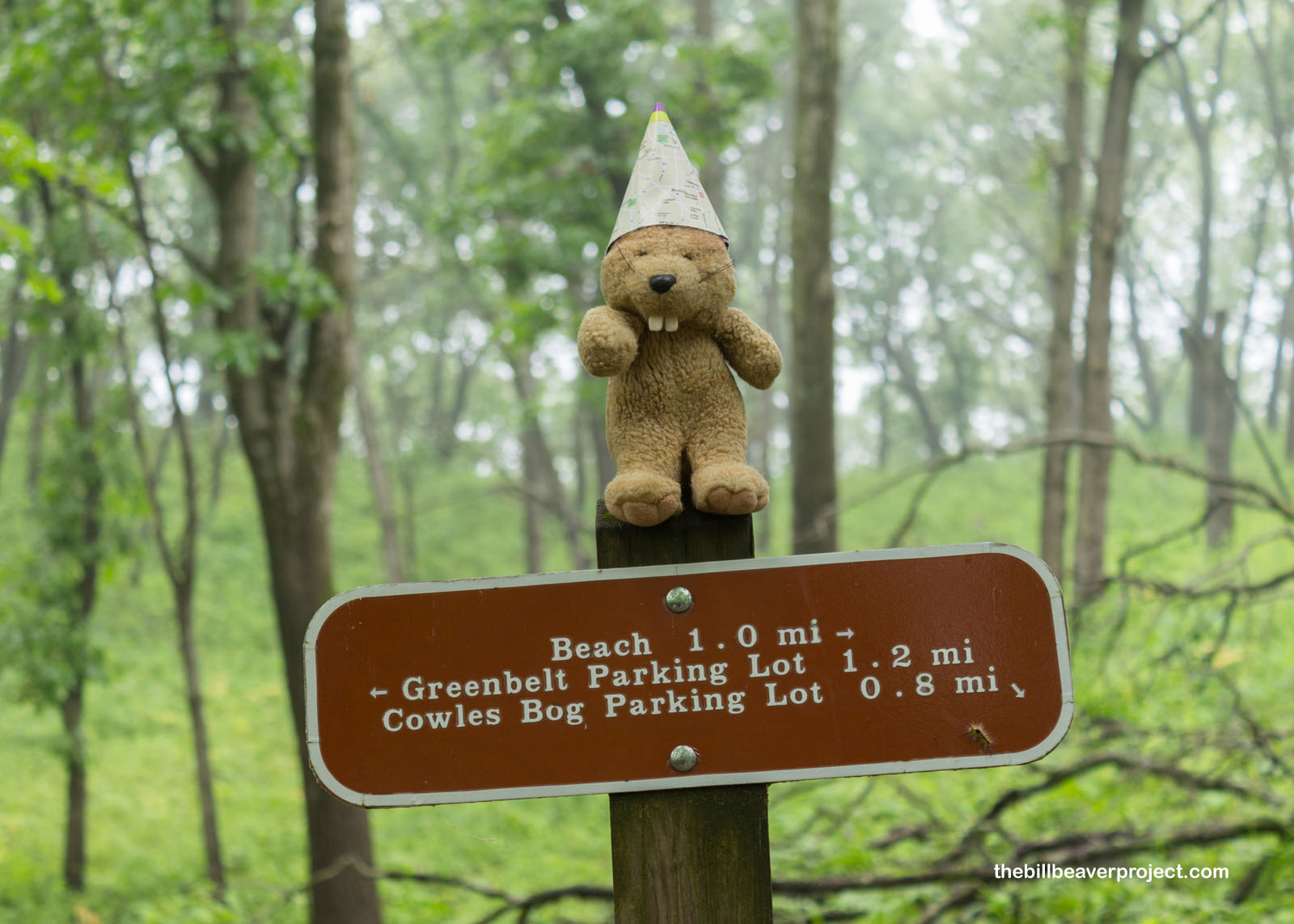 |
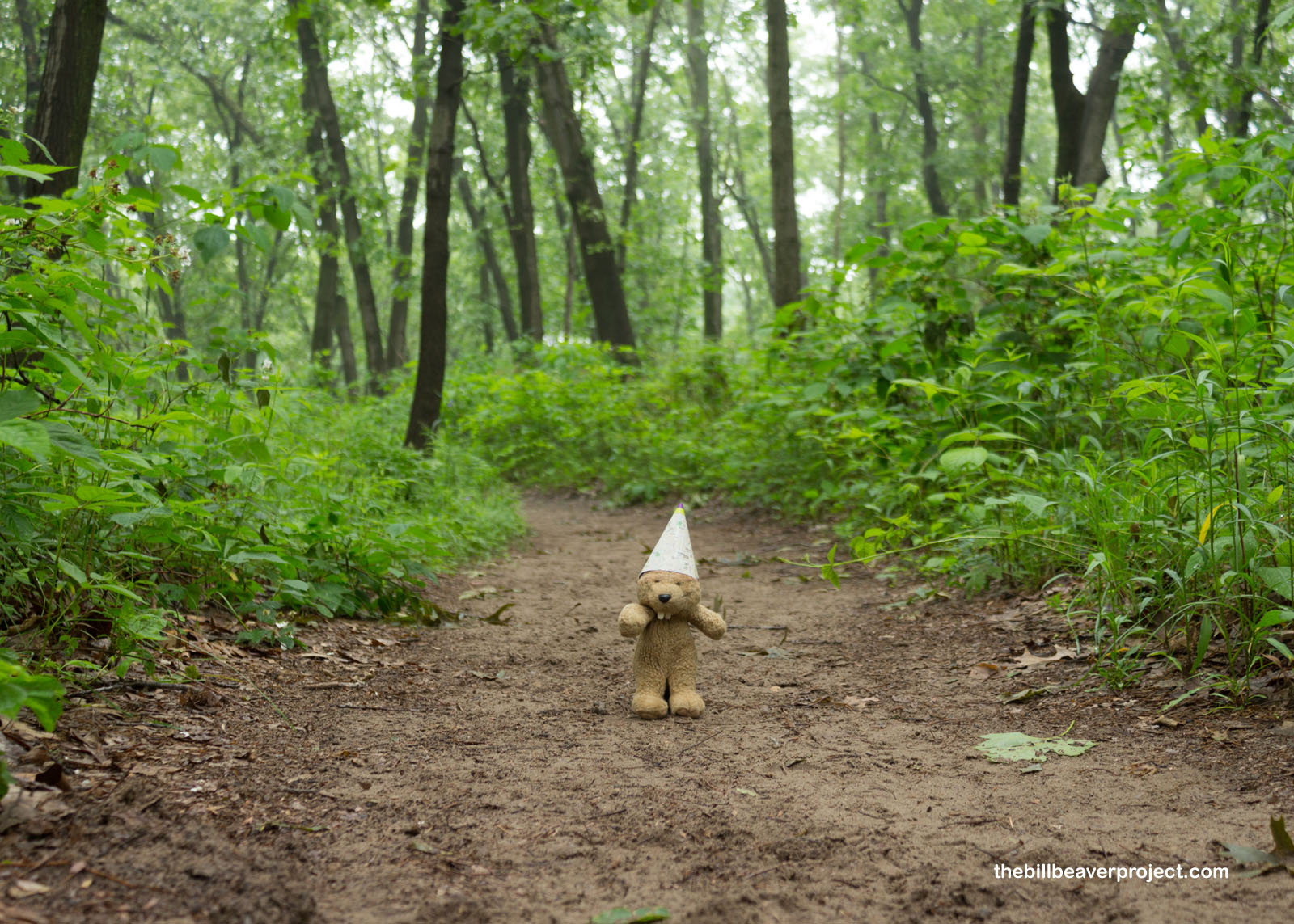 |
At last, the gentle trail gave way to a steep and sandy embankment. Brett had the challenge of his feet sinking deep in the sand, and I had the challenge of not falling into the footprints! A toboggan would have been very useful right about now!
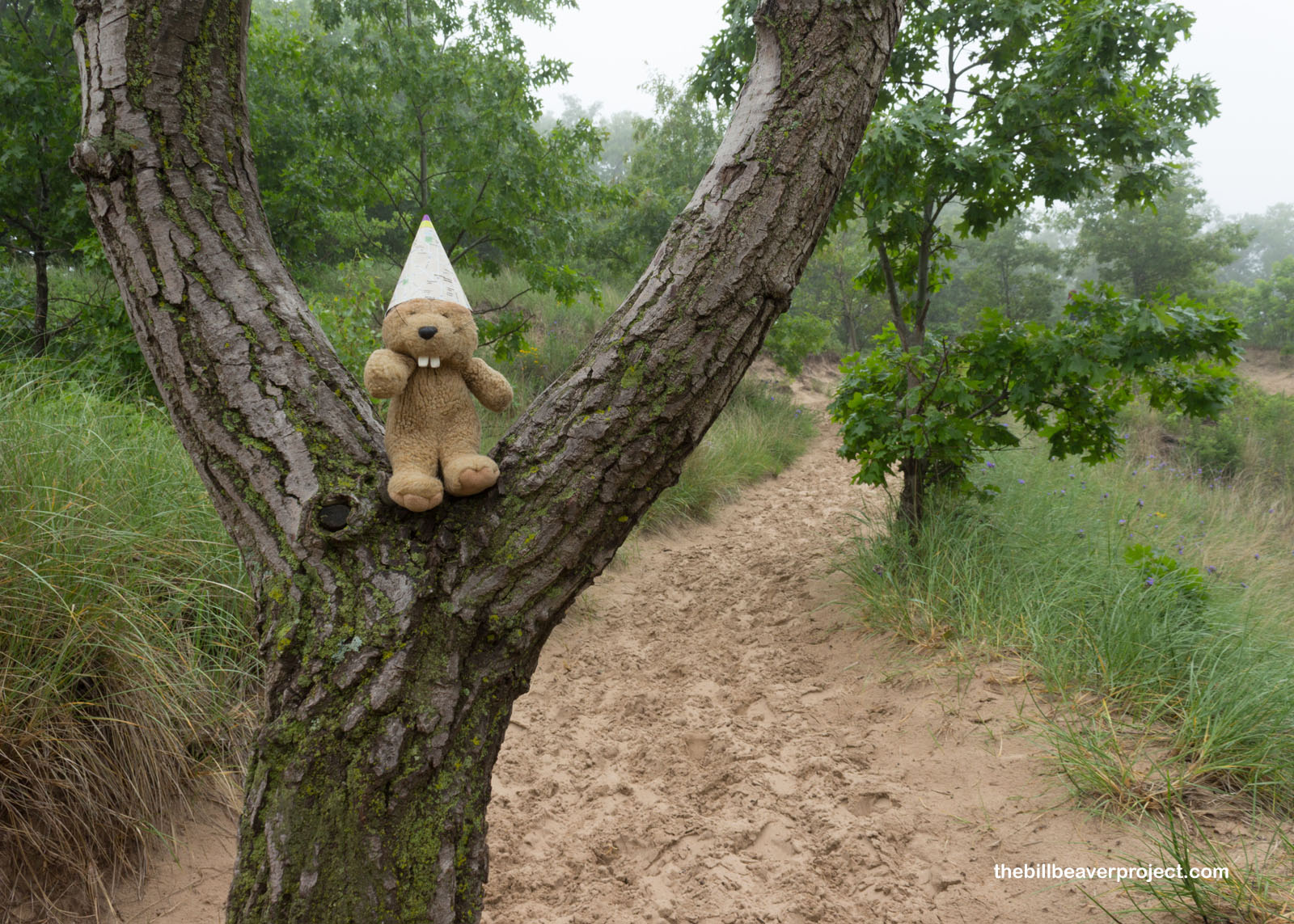 |
As the sandy slope leveled out, we stepped through the misty grassland to the beach, which was completely empty! Like a scene from The Twilight Zone, there was nothing here but us, the water, and the mist! What we lost in views of distant Chicago, we got back in the sort of beach solitude that would never, ever happen in Southern California!
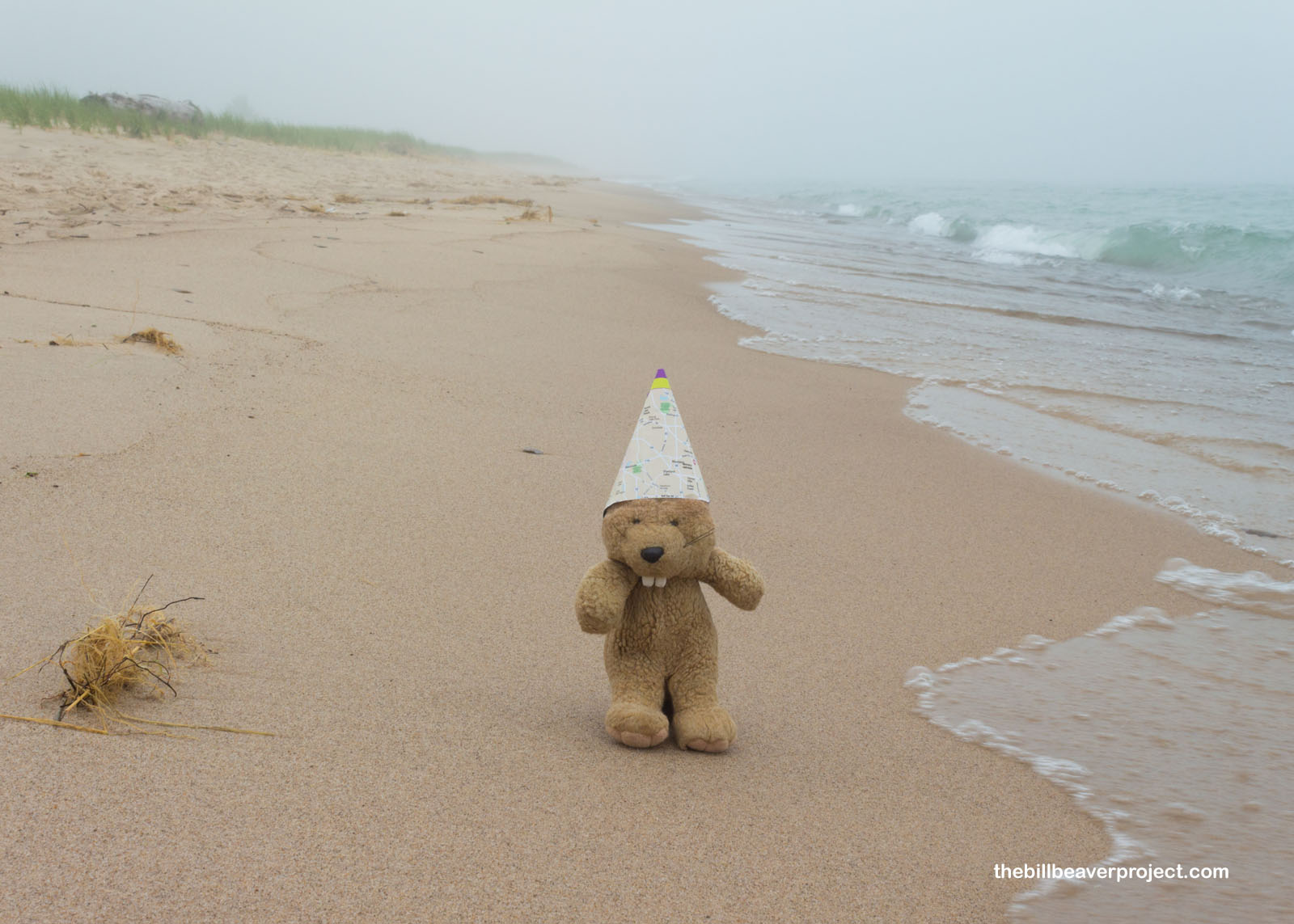 |
Lining the dunes were large swathes of marram grass, the unsung shaper and protector of dunes! Their roots hold the sand together so other species can start making their homes on them!
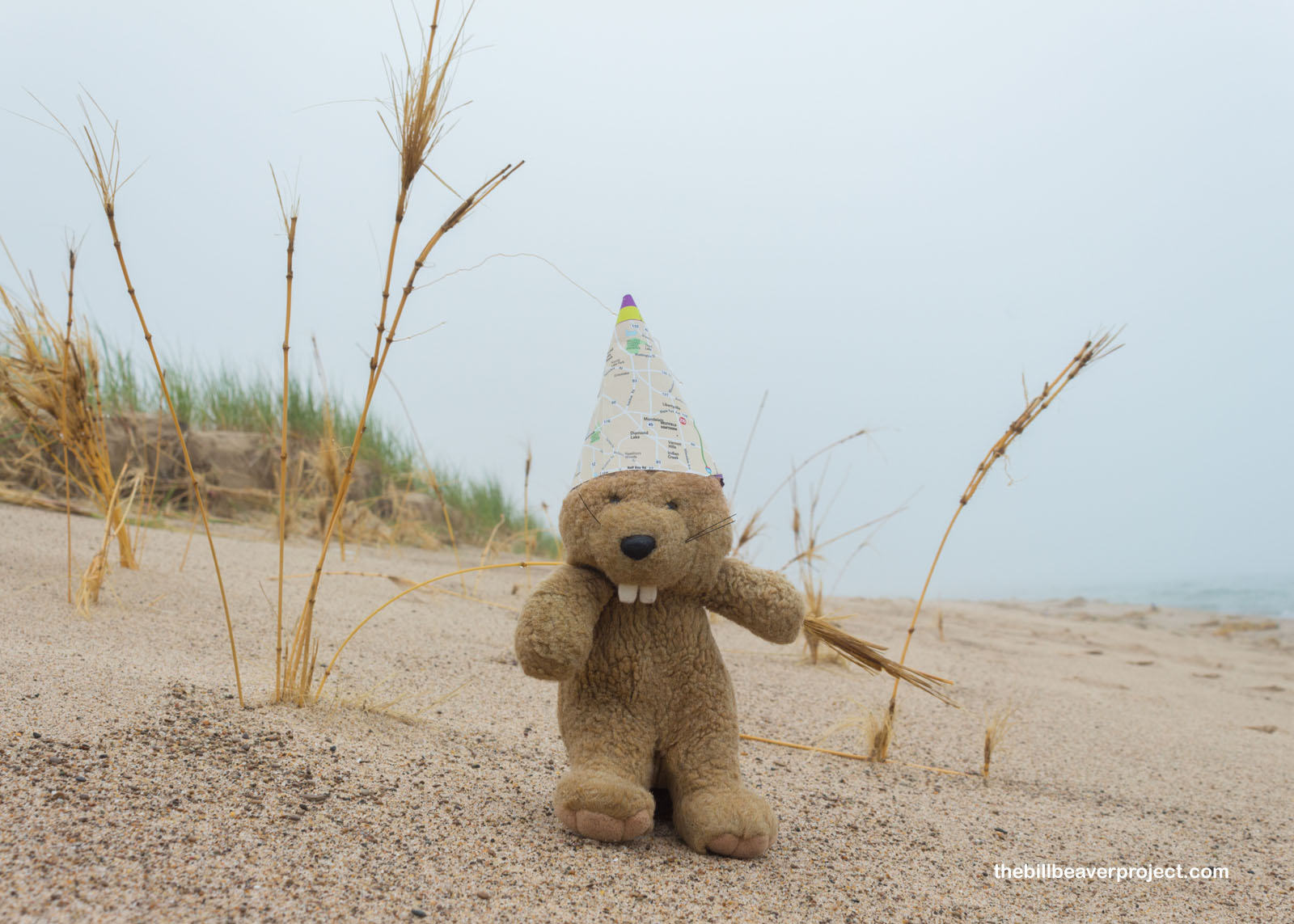 |
It was also just the right season to see the yellow blossoms of the hairy puccoon! This is another Great Lakes native, which Native American tribes used to create red dyes! In fact, the funny sounding word “puccoon,” comes from the Powhatan word poughkone, which refers to this red dye!
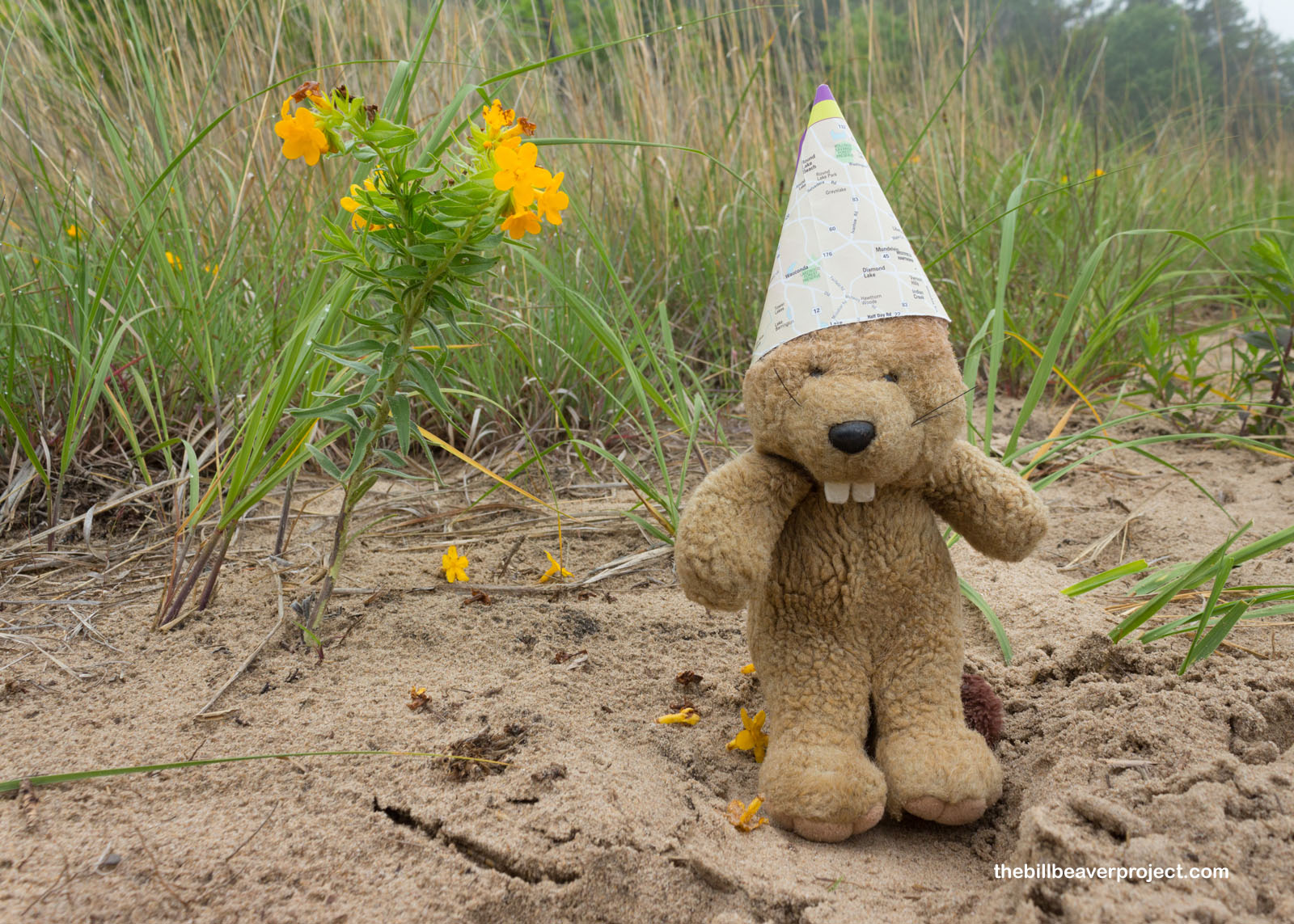 |
We walked a ways down this misty beach, with accumulating trash that had washed up from various storms, and pulled up in front of a huge steel mill that took us right out of solitude and serenity! It was nice while it lasted! Since Brett had to be at a family function by four, we halted our explorations of the beach here and moved on to our next destination.
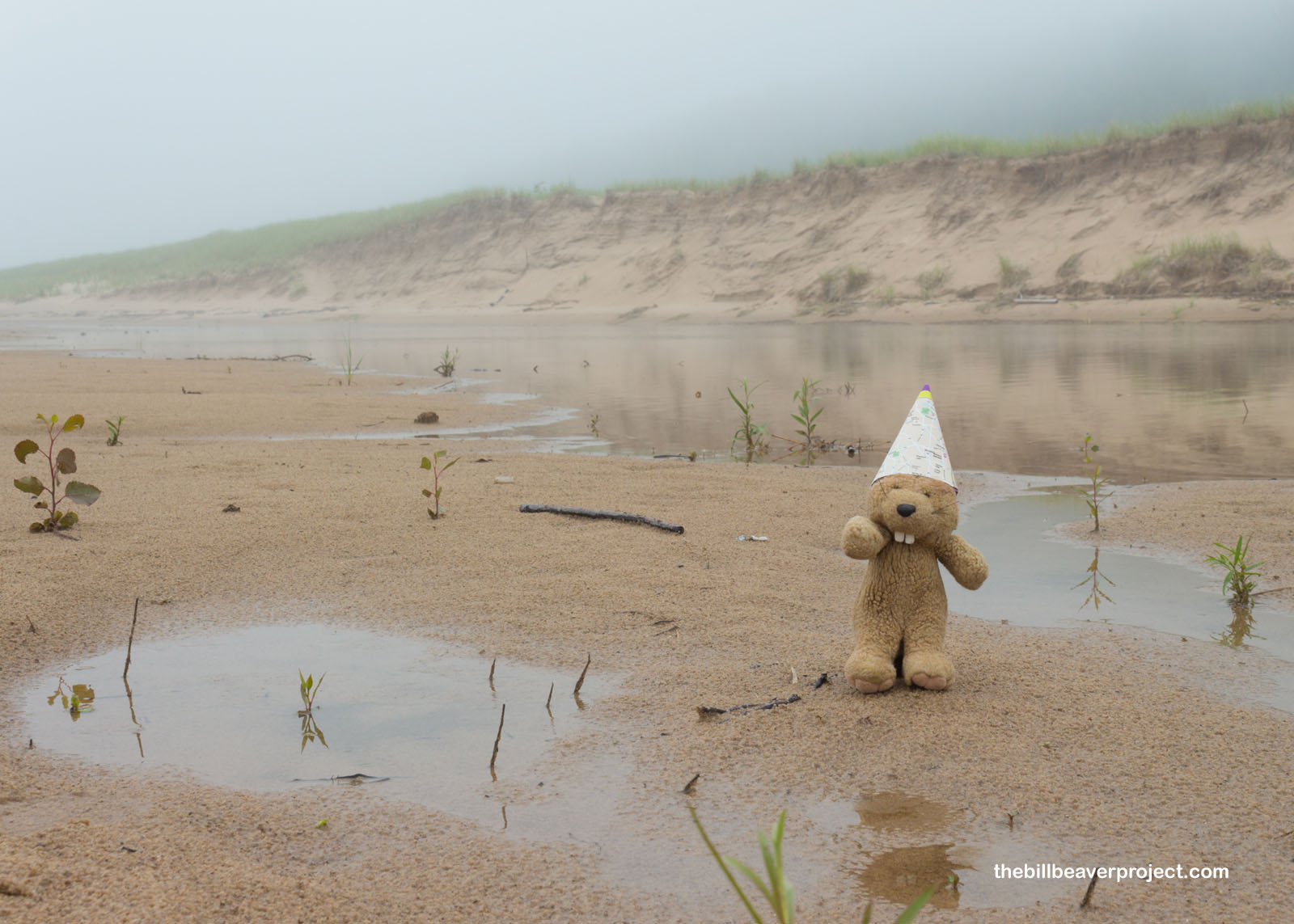 |
The next stop on today’s agenda, under clearing clouds, was Illinois’ sole national monument: Pullman National Monument, which had a lot more in common with the steel mill than the Indiana Dunes! Here, I convinced Brett to pick up a national parks passport and start an adventure of his own!
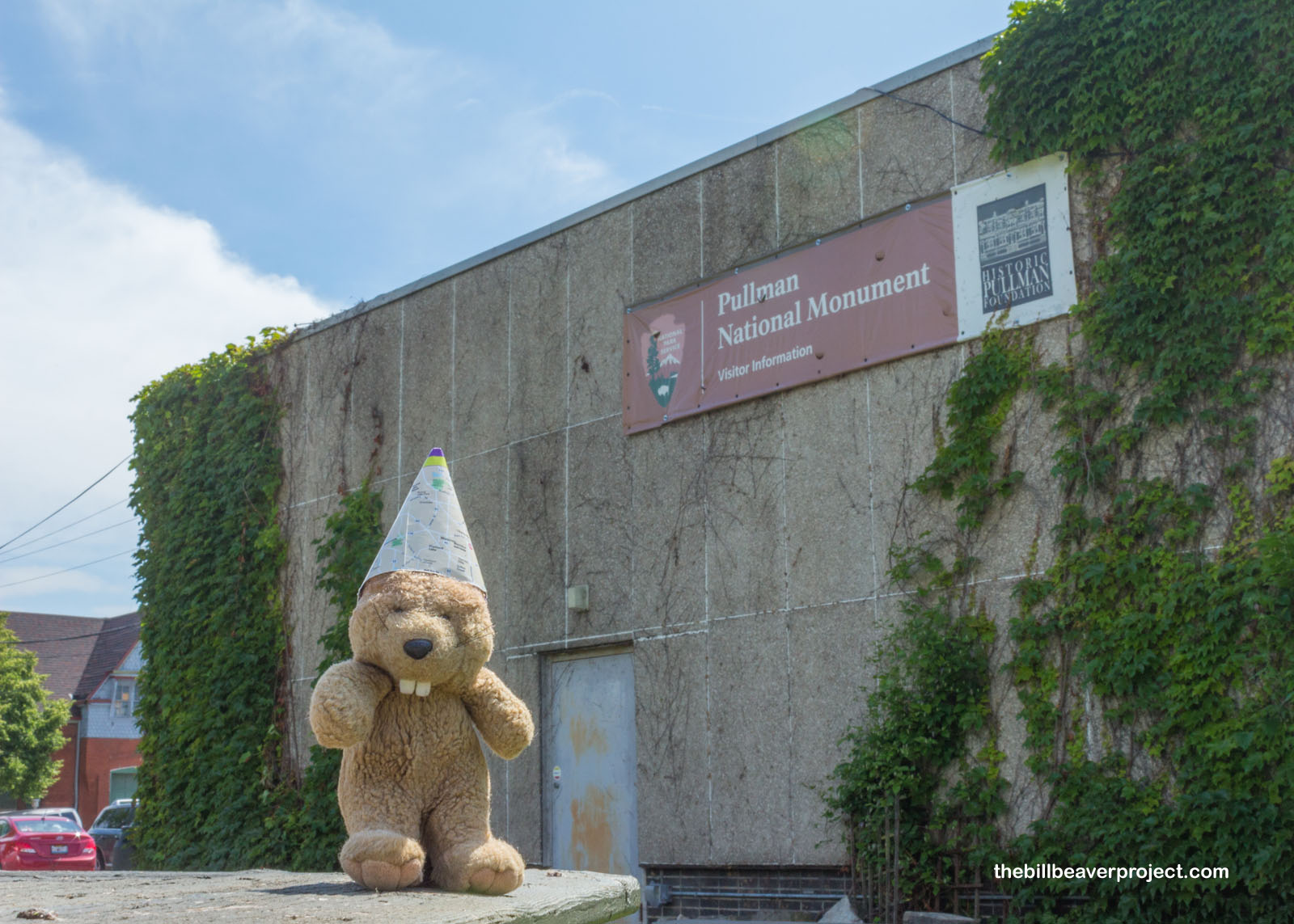 |
Pullman was a company town, founded by railroad car manufacturer, George Pullman! From 1880 to 1883, his factory town grew to a population of 8,000 workers, creating his signature Pullman car, which offered cross-country travelers a comfortable place to sleep on their journeys!
Most famously, though, this was the site of a massive railroad strike starting in 1894 and led by the American Railway Union (ARU)! After union members boycotted work on all Pullman cars across the country, the company responded by hitching Pullman cars to mail cars, and when that started to affect mail service, the federal government stepped in and put an end to the strike!
Though the first strike failed, and national strikes became illegal, it did lead to a sell-off of the company town by order of the Illinois Supreme Court! Many years later, it inspired another, more successful strike by the Brotherhood of Sleeping Car Porters (BSCP). Their gain of higher salaries and job security was the first major labor agreement between an African-American union and a corporation!
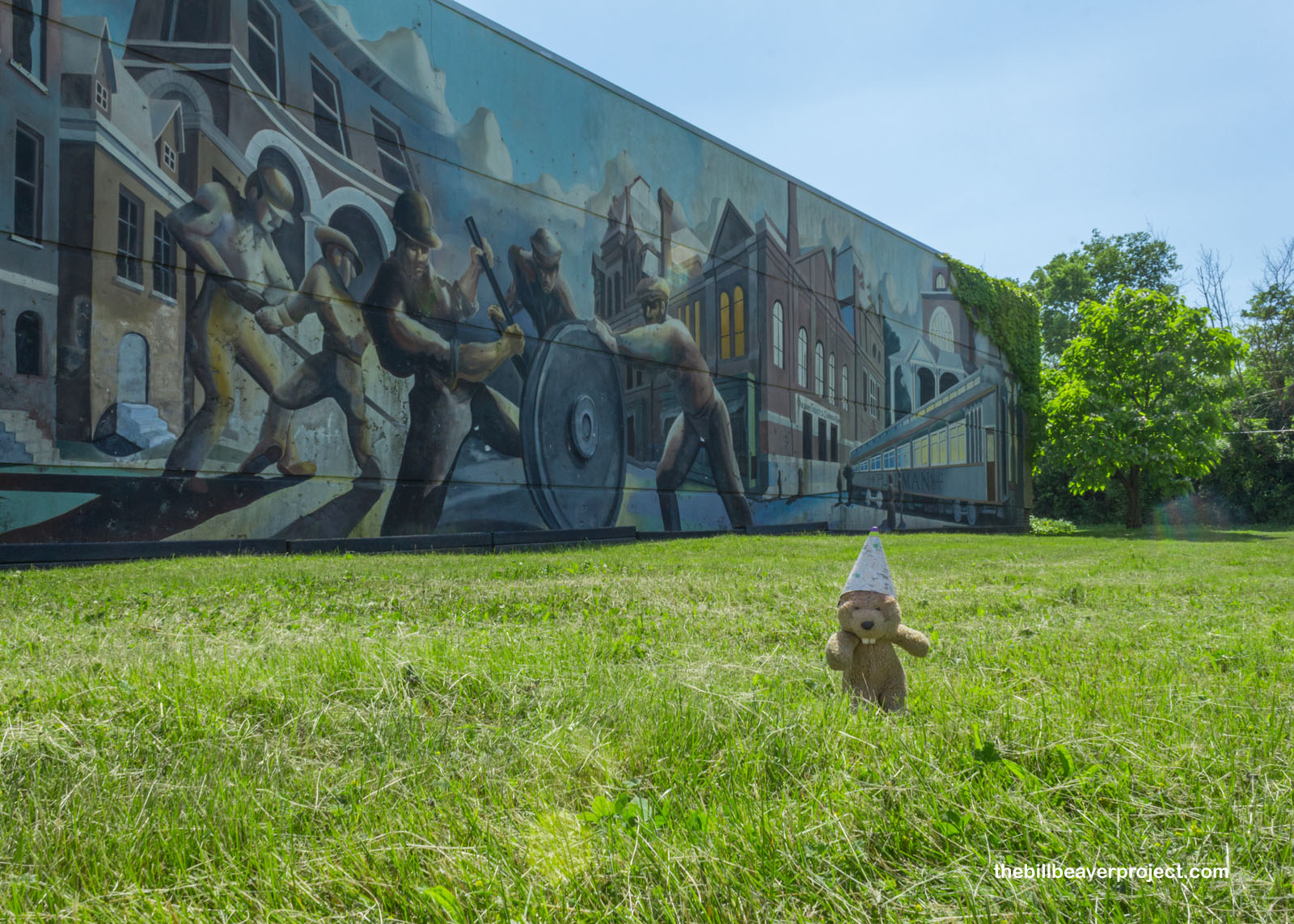 |
Luckily for modern visitors, much of the Pullman company town has been preserved to keep telling the story! In fact, folks still live in the Queen Anne style brick houses designed by architect, Solon Spencer Beman, which boasted such luxuries as indoor plumbing! Living here wasn’t free, though, and the workers did have to pay additional rent to live and work here!
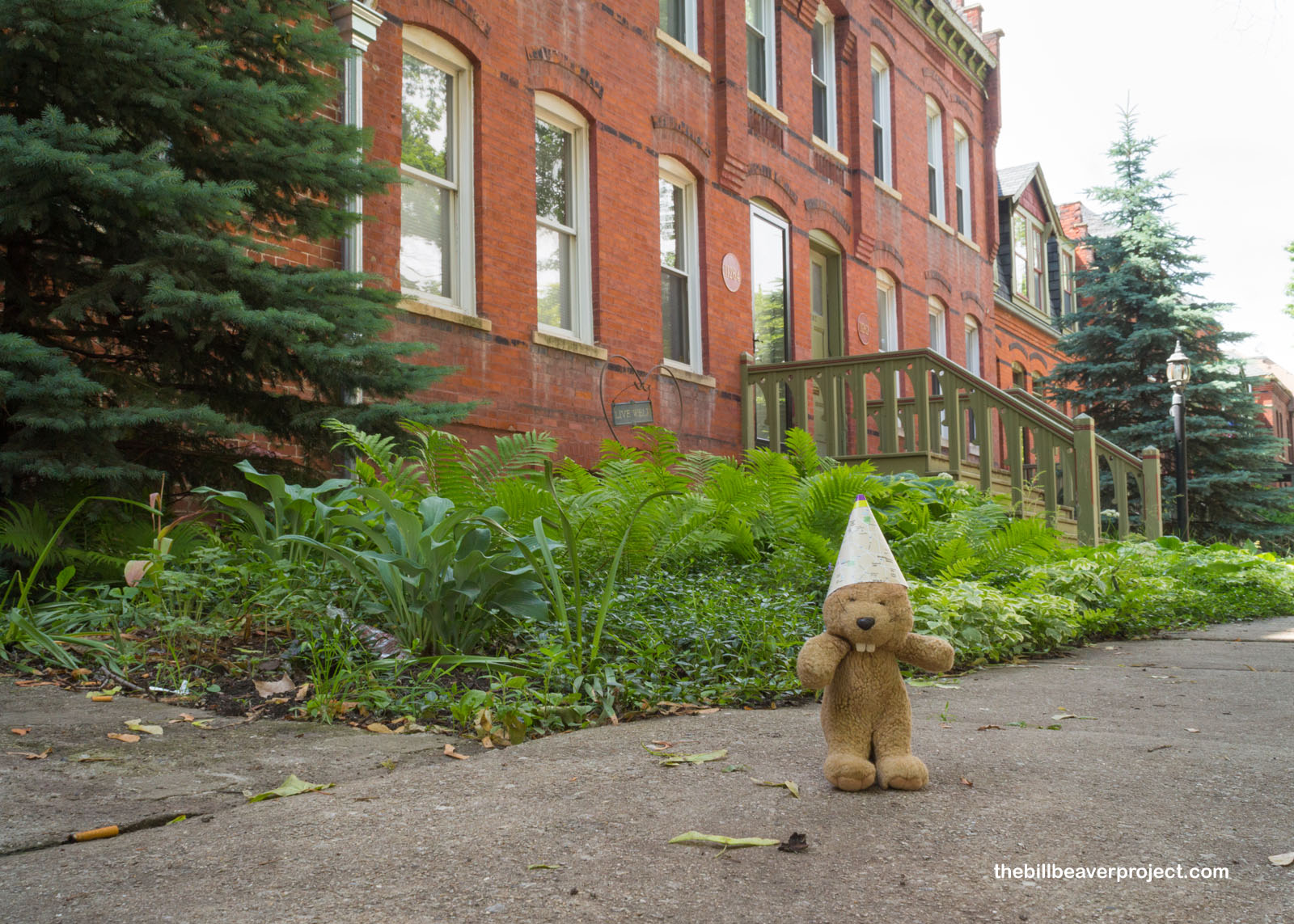 |
Solon Beman was also responsible for the town’s Market Square, where residents could shop for groceries and host events! Sadly, the buildings here burned down twice and are still being restored, but some encouragement still remains at its heart: a wooden sculpture by Matthew Hoffman that spells out “Go for it!”
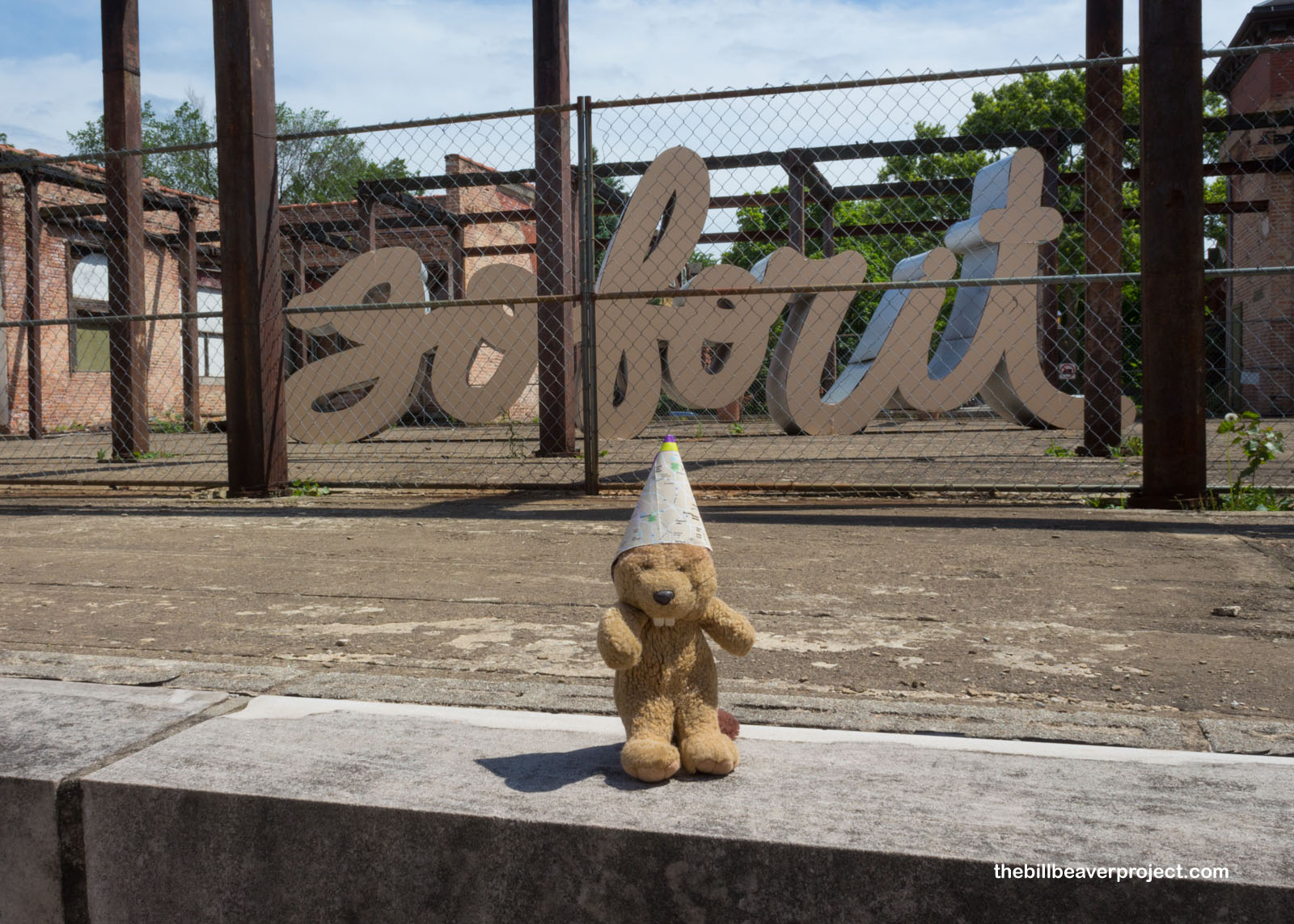 |
Down the street, the original Pullman Administration Building was also still under renovation after a fire, this one set by an arsonist in 1998! It’s taking a long time to restore this amazing building, but when it’s complete, this is going to be the new visitor center for the park!
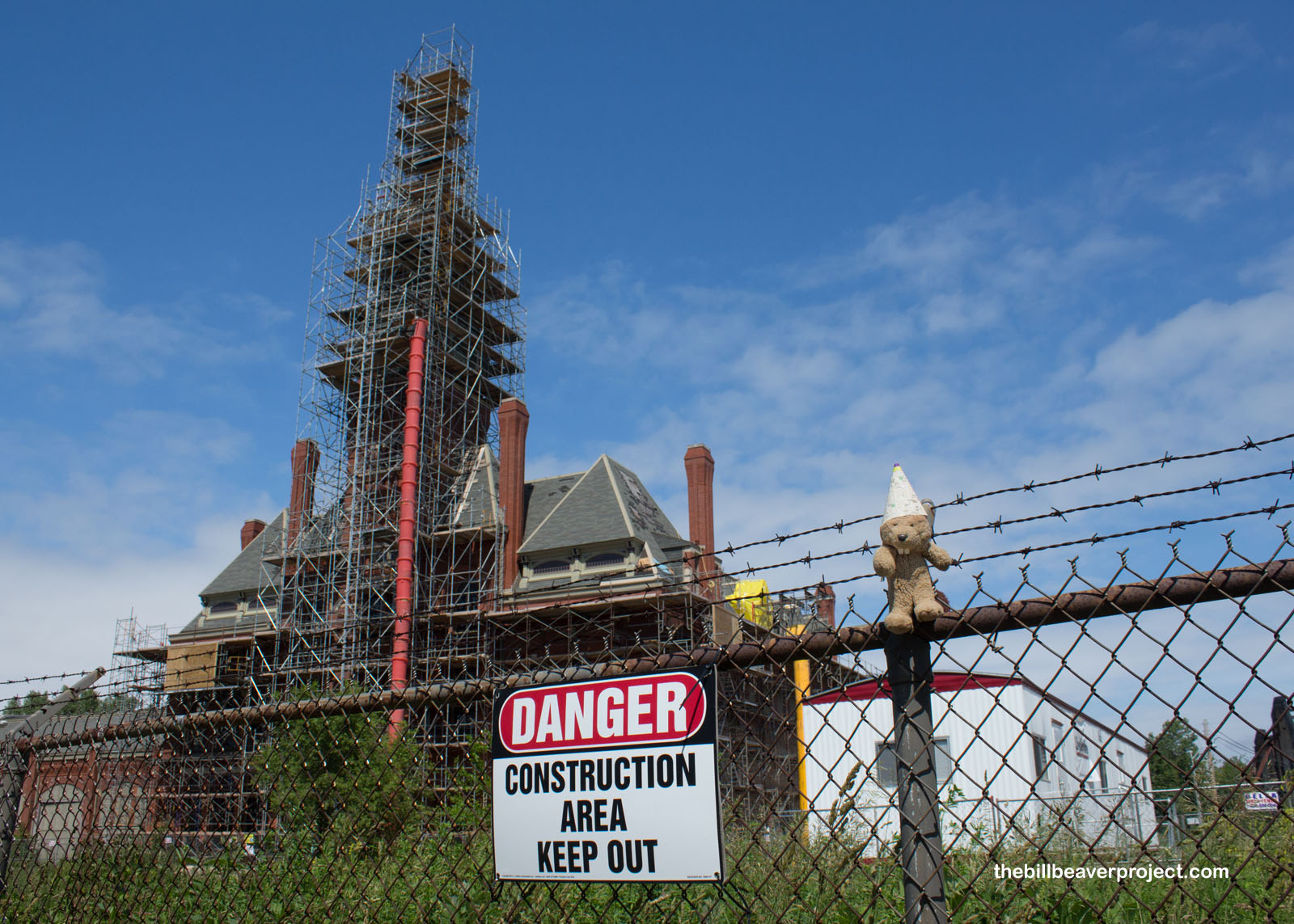 |
Not long after the Administration Building was constructed, Mr. Pullman arranged for a showcase hotel, the Hotel Florence, which he named after his daughter! With 50 rooms, organized like a train car with more expensive rooms on higher floors, this hotel also boasted gas lights and steam heating provided by the factory across the street!
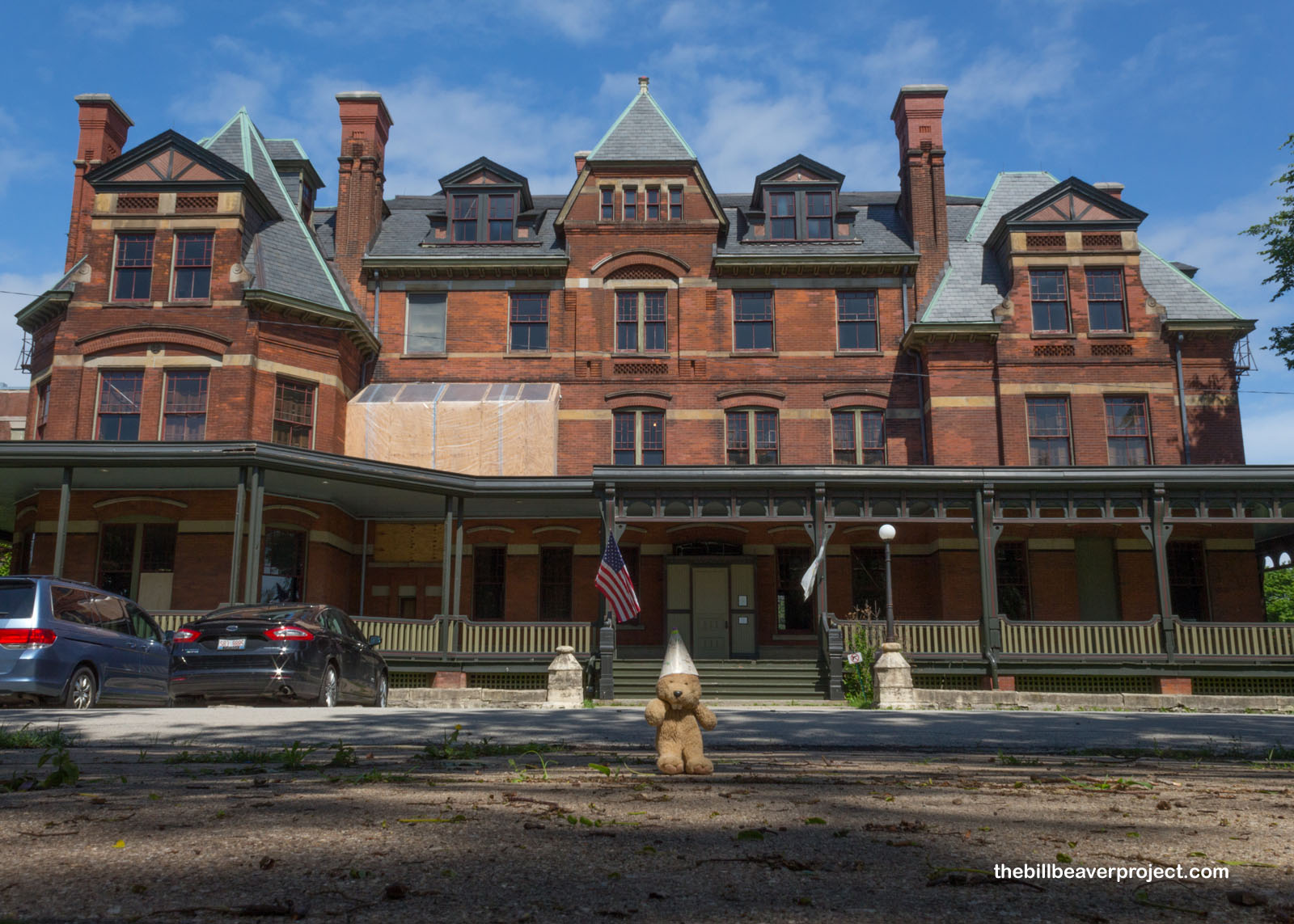 |
As we returned to the parking lot, I wanted to take a closer look at the Greenstone United Methodist Church, which I thought was particularly beautiful! Built from cherry wood and Pennsylvania serpentine, this church was meant to bring in many denominations, but rent being so high, most religious groups just met in small rooms in Market Square! It wasn’t until 1887 that a Presbyterian group started to hold services here. They stayed here for twenty years before selling to the Methodists, who still hold services here today!
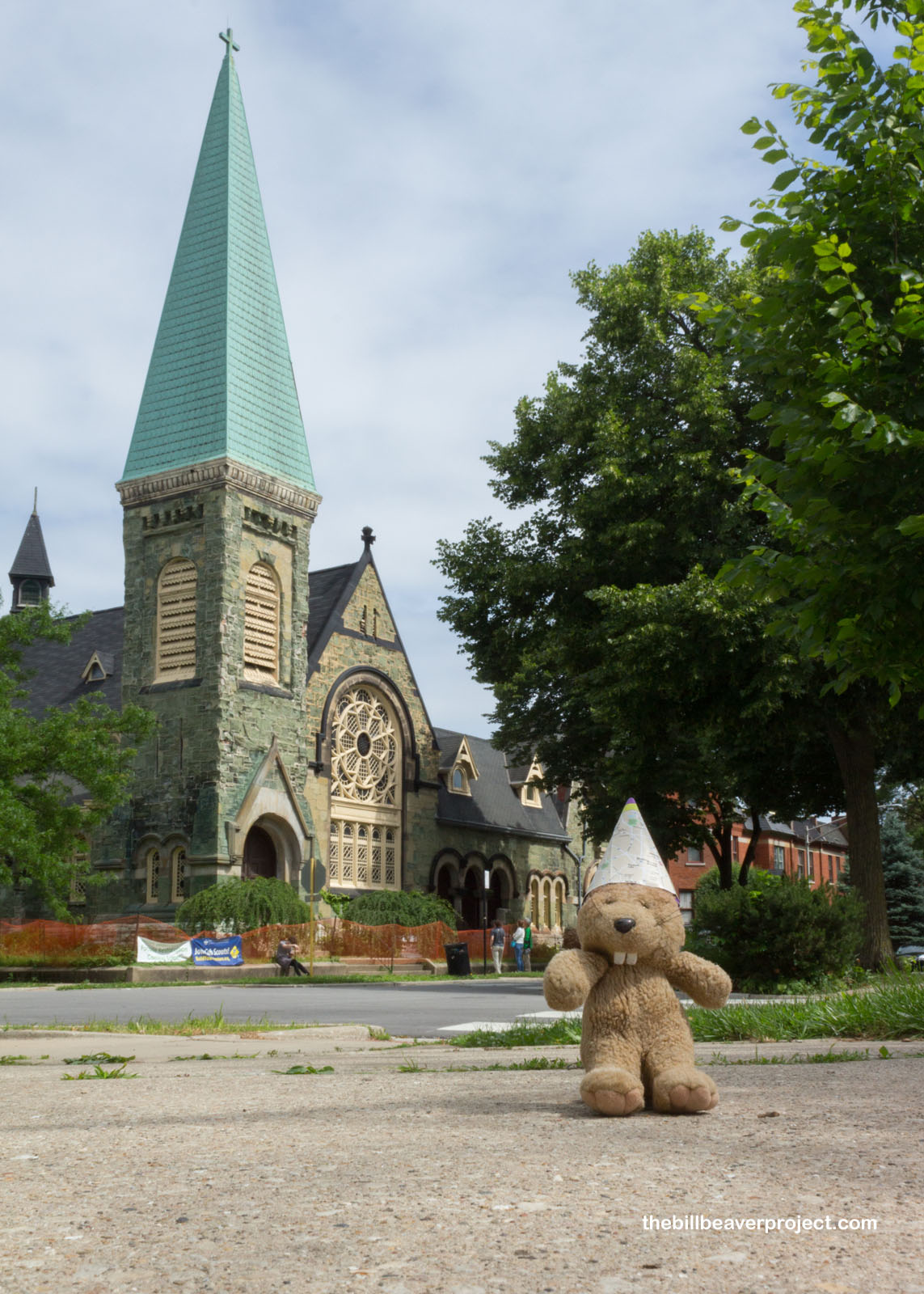 |
At the end of our Pullman circuit, it was time for Brett to head off to his family function. He drove me back to Chicago as the clouds rolled back in, and dropped me off with promises of more hikes later in the year. It was time to check out a place I’d hoped to see, even briefly, on my visit to Chicago: the famed Field Museum!
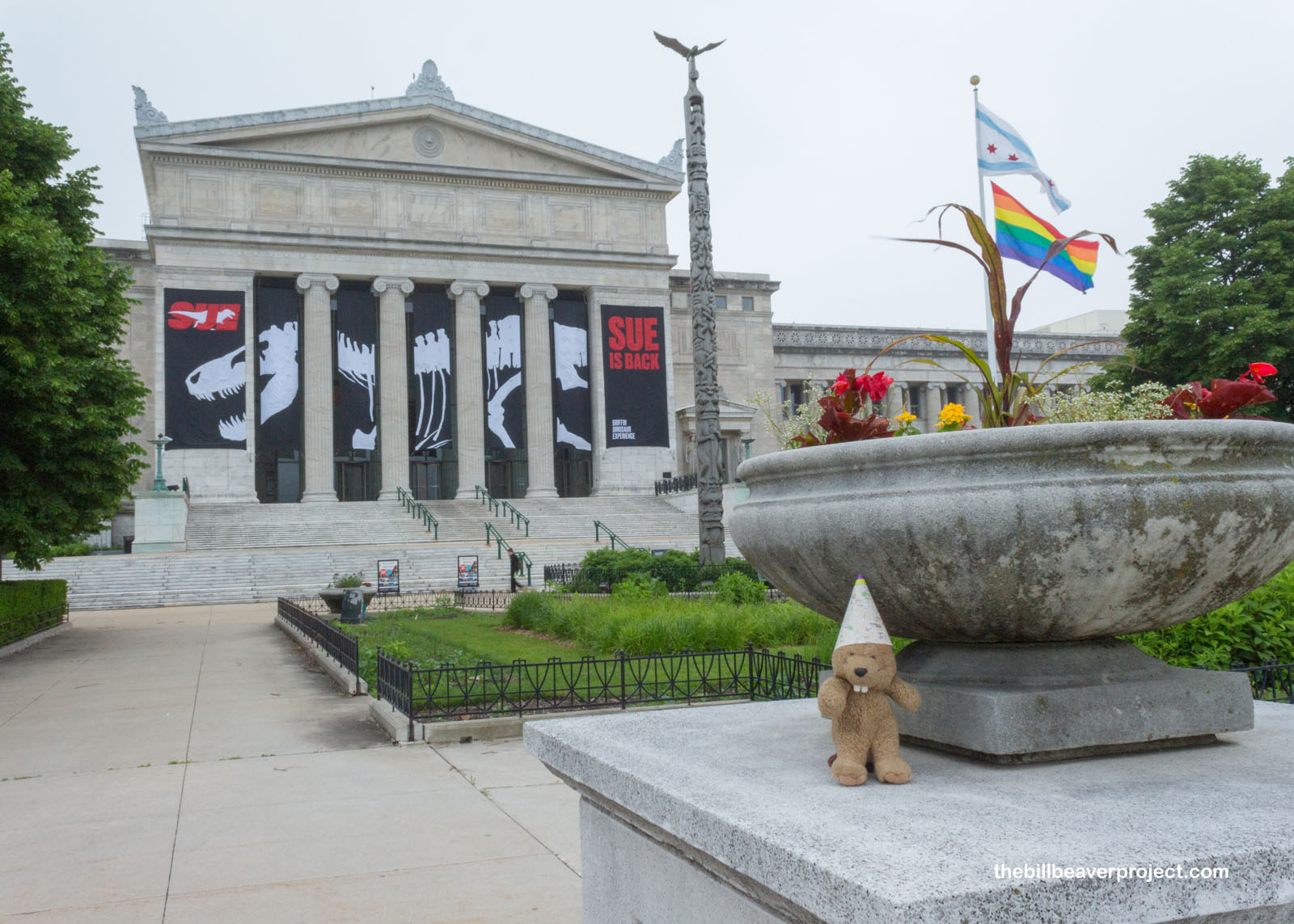 |
Originally housed in the Palace of Fine Arts for the 1893 World Columbian Exposition, this magnificent building opened its doors in 1915 to house a fraction of the 40 million collected items that have accumulated since 1894! Since I only had an hour before the museum closed, I would only have time to see two superstars of the museum’s dinosaur collection!
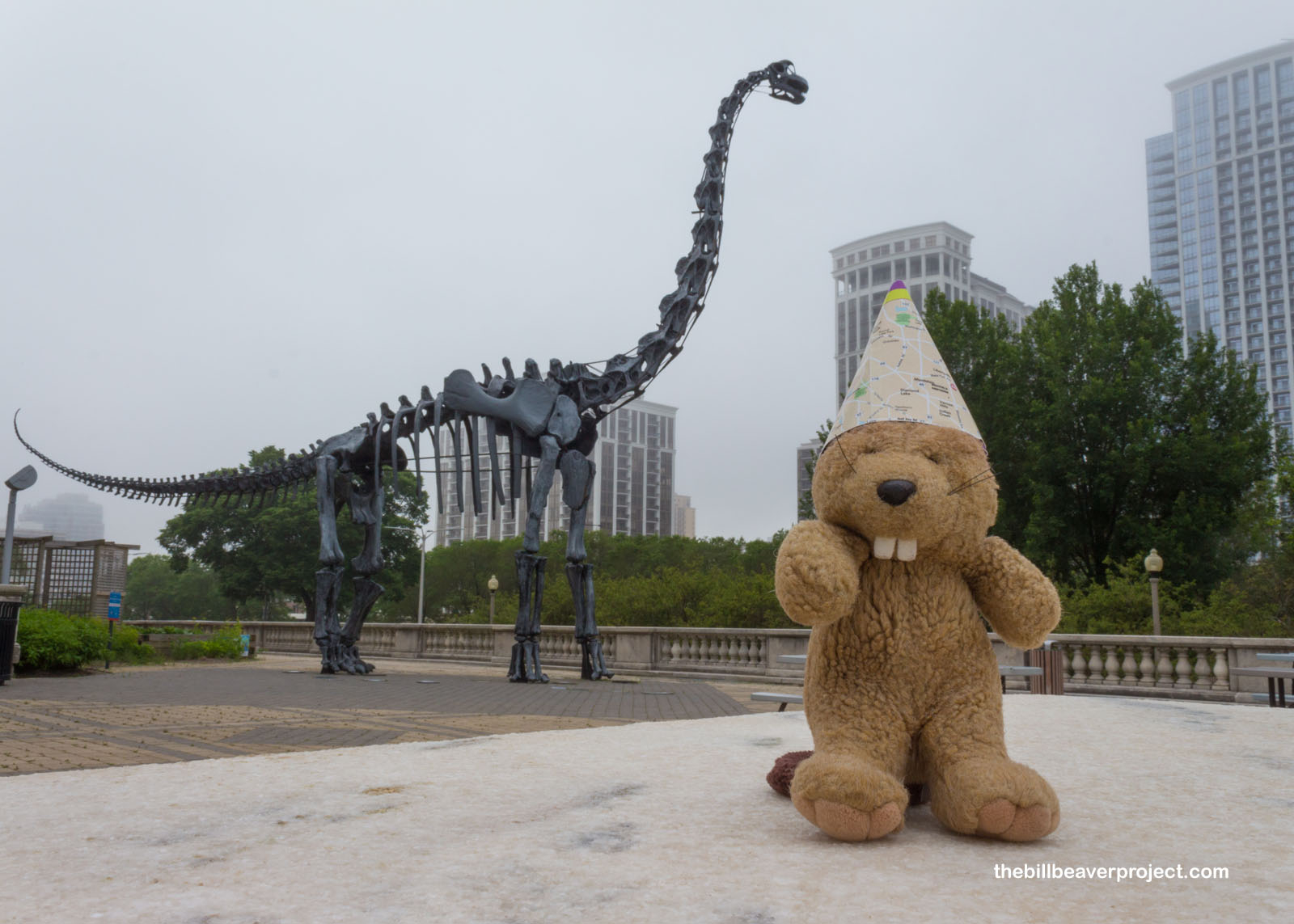 |
The first, housed in the museum’s iconic Stanley Field Hall, is Máximo, the Argentinian titanosaur! Originally found in Patagonia, this huge Cretaceous sauropod would have been the largest animal ever to have existed, spanning 122 feet in length and weighing up to 70 tons!
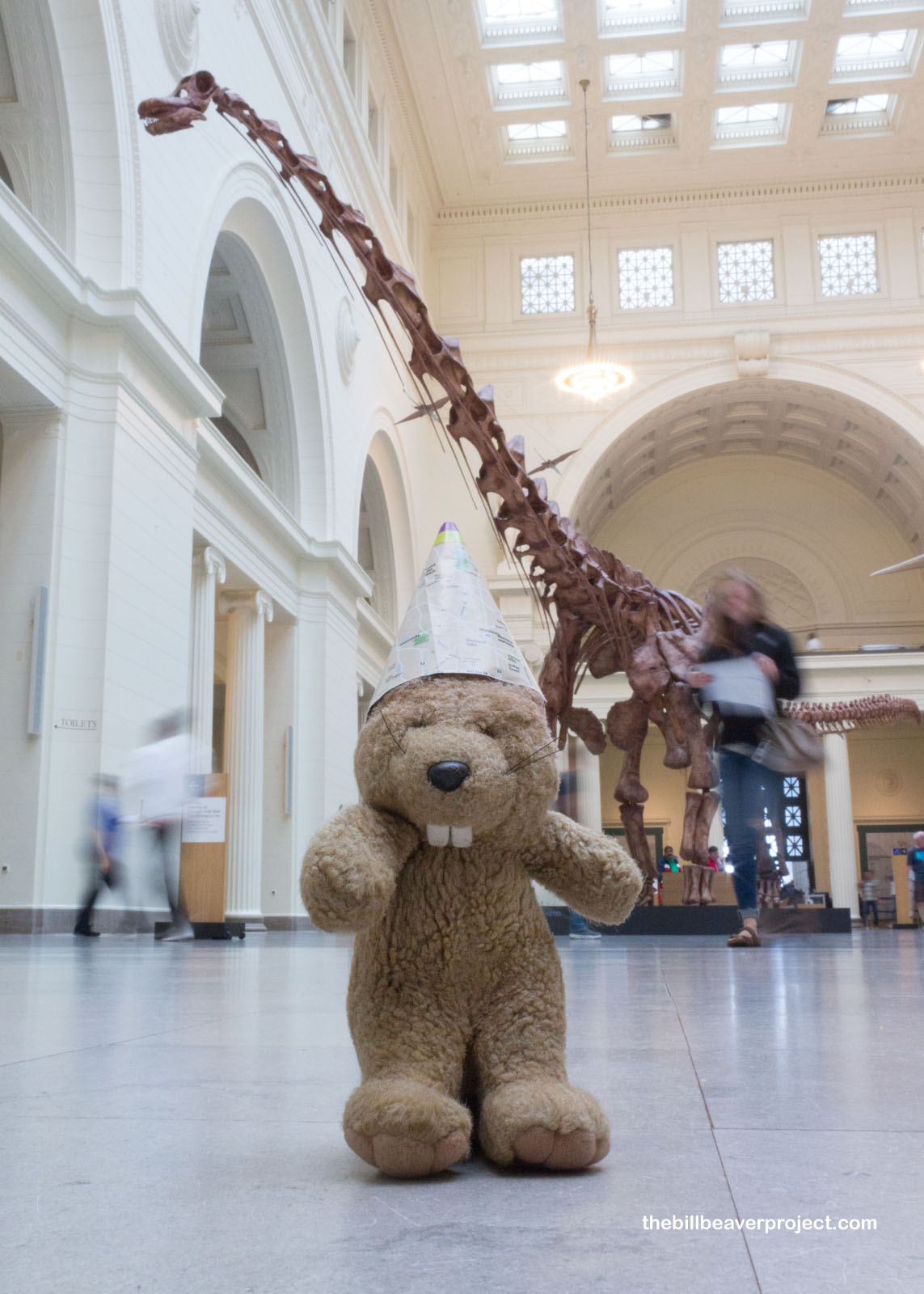 |
Not only did Máximo stretch across the hall, he also spanned two levels and many millennia of technology! He’s so tech savvy, that visitors can actually text him questions in English and Spanish about life in ancient Patagonia! I wonder how he can type with such huge fingers!
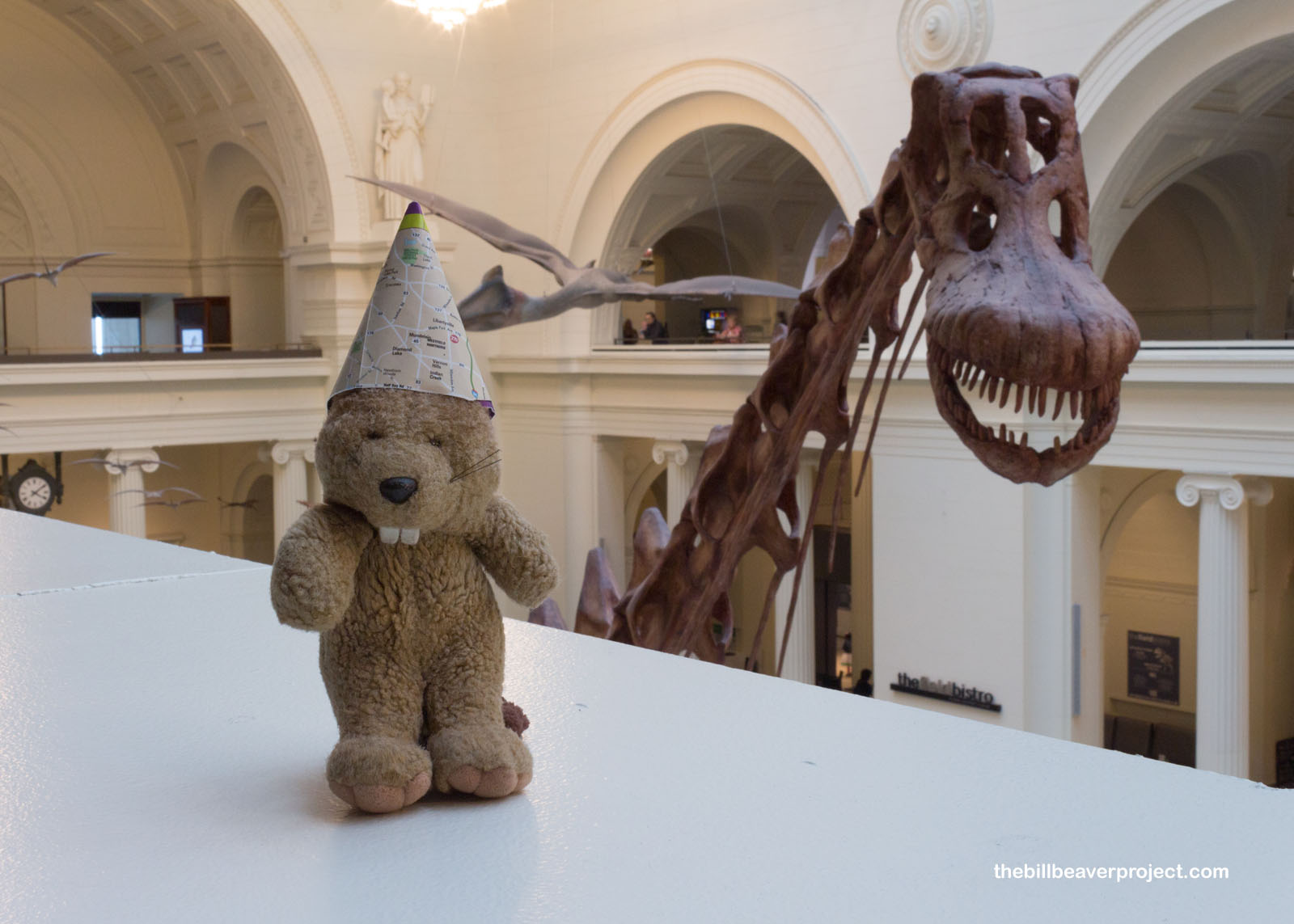 |
But the main reason I rushed into the Field Museum with criminally little time was to see the dinosaur hall, featuring the historic murals of Charles Knight and the largest, most complete Tyrannosaurus skeleton ever discovered! This T-Rex was named Sue after paleontologist Sue Hendrickson, who dug up the skeleton in 1990! I sure was surprised to find Sue’s head in a case all by itself. Wasn’t it supposed to be on the body?
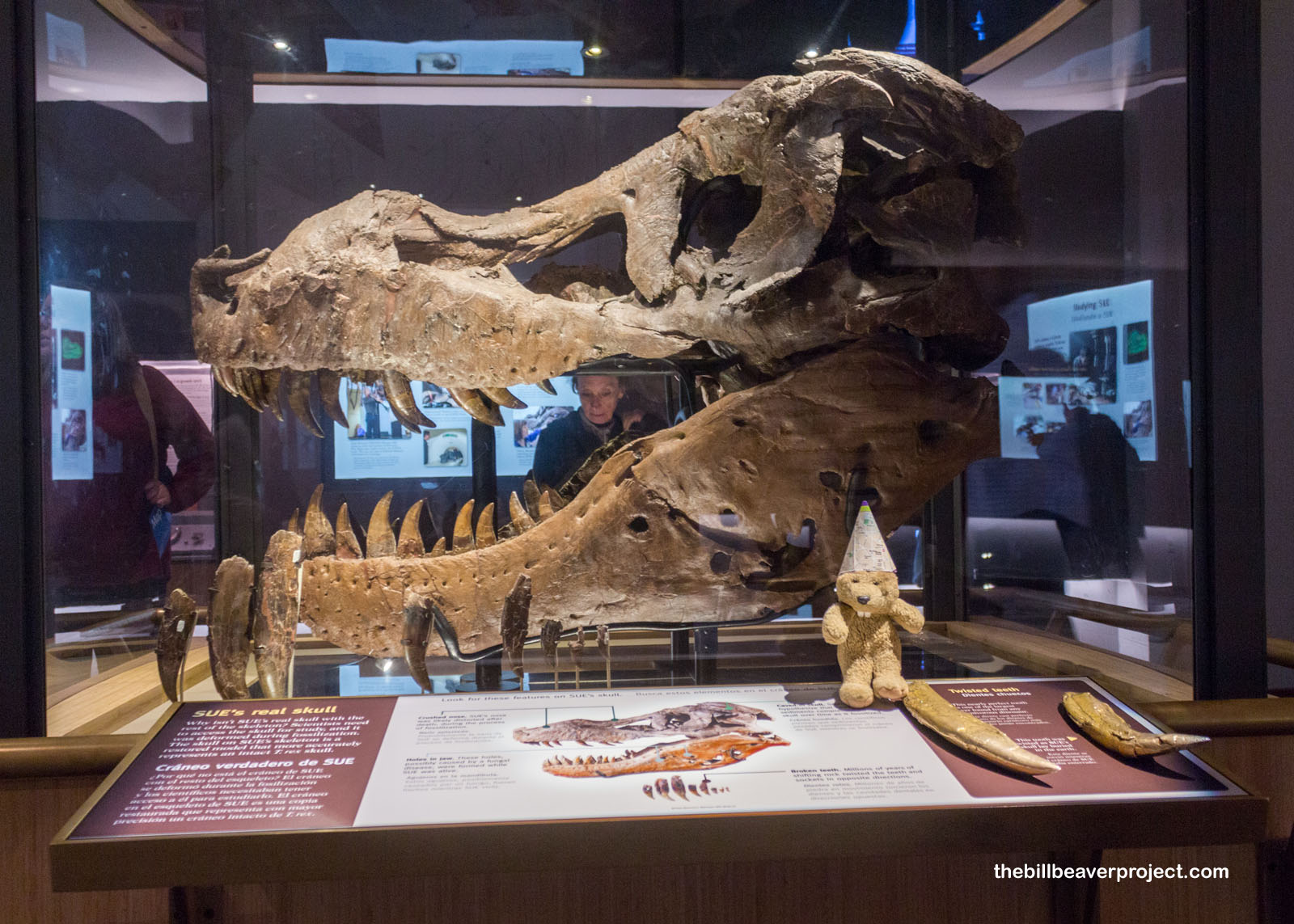 |
Sue’s skeleton is full of controversy and intrigue! The head now on top of her body belonged to a different T-Rex because her nose collapsed after she died and looked ugly! That wasn’t the biggest controversy, though! The Field Museum only came to own her skeleton after a five-year ownership dispute between the Black Hills Institute, who dug up the remains, and the owner of the land that produced those remains! In the end, the Field Museum, with the help of private donors, bought Sue for over $8 million, the most ever paid for a fossil! Of all possible outcomes for this magnificent predator, I sure am glad she ended up in her own room to be adored by thousands of dino fans each year!
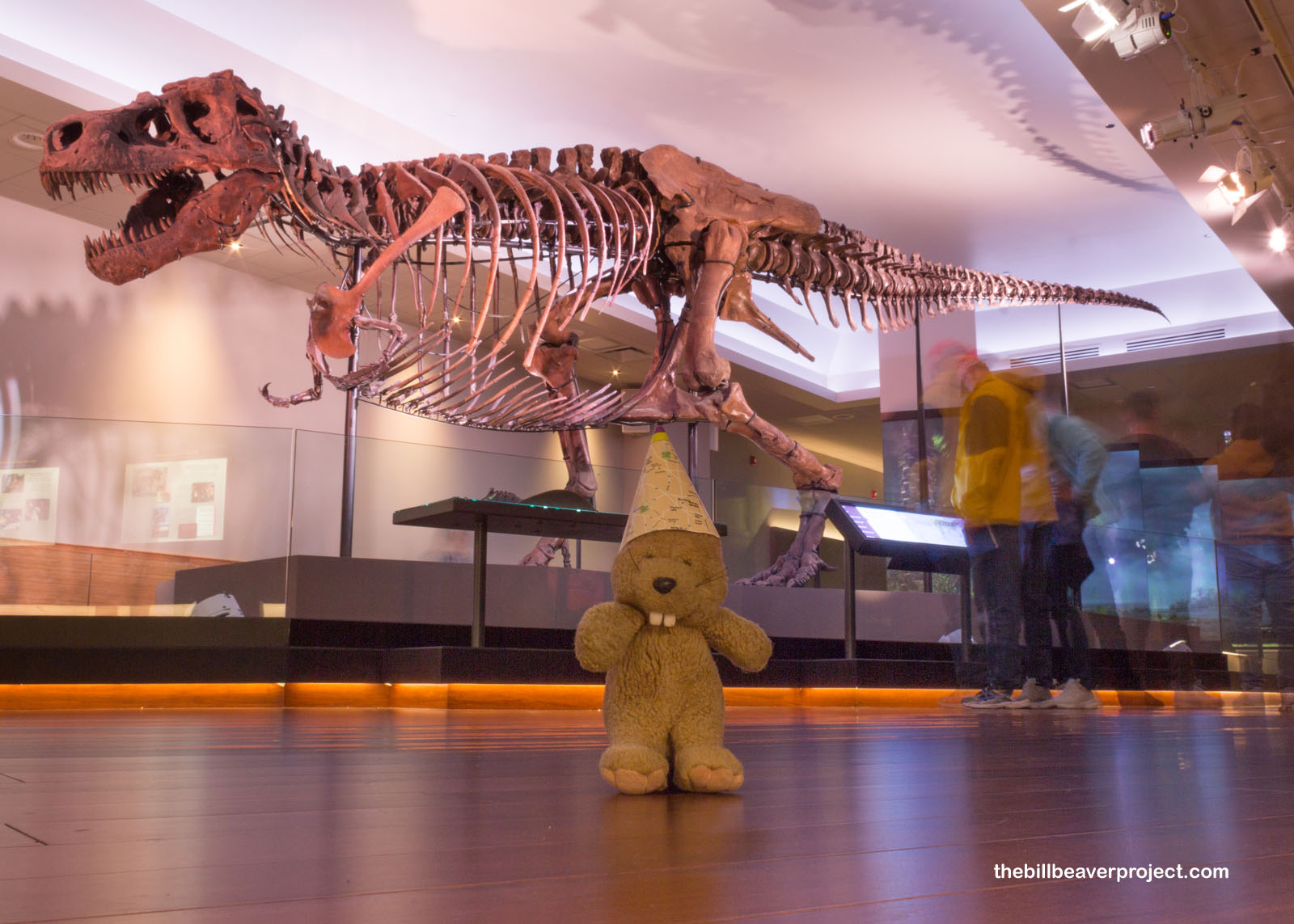 |
The museum closed all too soon, which sent me shuffling back out into misty Grant Park to bookend my visit to the Windy City. My brief visit didn’t do this place justice, so I may have to return in the future for a more in-depth exploration. I’ll ponder this over a big birthday slice of tasty deep-dish pizza!
Be distinct, not extinct!

 Previous Day |
Total Ground Covered: 161.8 mi (260.4 km) |
 More 2019 Adventures |
